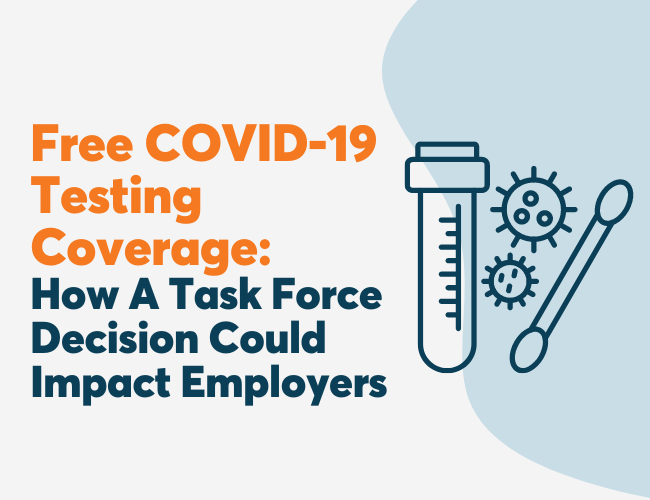This blog was written by a guest contributor, Barbara Zabawa, President of the Center for Health and Wellness Law.
On January 7, 2021, the US Equal Employment Opportunity Commission (EEOC) finally released the proposed language revising the wellness incentive rules under the Americans with Disabilities Act (ADA) and the Genetic Information and Nondiscrimination Act (GINA). This language was what the wellness industry has been waiting for since the EEOC met on the proposed rules on June 11, 2020.
The EEOC is proposing these changes because of a court order issued in the AARP v. EEOC case. In that case, the judge agreed with the EEOC that the rules issued in 2016 needed to be revised.
Although the proposed rules do not have the force of law yet, employers may be wondering what the proposed rules mean for their workplace wellness programs, if they were to remain as currently proposed. Below are some of the biggest changes that could occur for workplace wellness programs that collect employee health information through health risk assessments (HRAs) or biometric screenings.

1. No More ADA Notices.
Currently, employers that collect employee health information through HRAs or biometric screens must provide employees with a notice before collecting such information. To help employers comply with that notice requirement, the EEOC provided sample notices on its website. The EEOC now believes the notice requirement is unnecessary because of the proposed de minimis standard, discussed below. The proposed rules still prohibit employers from conditioning participation in a wellness program on an employee allowing information to be disclosed to a third party. Employers can still disclose health information to a third party; however, they may not prohibit employees from participating if the employee refuses disclosure of their information to a third party.
Even though the ADA notice requirement may disappear, the GINA authorization requirement will not disappear. Therefore, employers that collect family medical history information from employees, or information relating to the manifestation of disease or disorder from an employee’s family member (spouse or child), must make sure that the individual signs a GINA-compliant authorization before such collection occurs.
2. Non-Group Health Plan Wellness Programs Must Limit Incentives to “De Minimis.”
The proposed ADA and GINA rules define “de minimis” by providing examples of what qualifies as de minimis in the language of the rule: “water bottle or a gift card of modest value.” This guidance corresponds to the de minimis guidance offered by the Internal Revenue Service (IRS) when determining if an incentive is subject to taxation—26 USC § 132(a)(4). This means that a wellness program that collects employee health information and is offered to all employees, regardless of whether the employee is enrolled in the company’s group health plan, will be limited to offering incentives with de minimis value only.
Group health plan wellness programs that are also “health contingent” wellness programs will be able to offer incentives in alignment with the Health Insurance Portability and Accountability Act (HIPPA) and the Affordable Care Act (ACA) wellness incentive rules. Those incentive limits are currently up to 30% of the total cost of coverage (measured by both employee and employer contribution) or up to 50% of the total cost of coverage if the wellness program relates to tobacco cessation. The EEOC rules provide the following guidance to determine if your wellness program qualifies as a group health plan wellness program:
a. The program is only offered to employees who are enrolled in an employer-sponsored health plan;
b. The incentive is tied to cost-sharing or premium reductions (or increases) under the group health plan;
c. The contract for wellness program services is between the wellness vendor and the group health plan or health insurance issuer; or
d. The wellness program is a term of coverage under the group health plan.
The proposed rules define a “health contingent” wellness program as “a program that requires an individual to satisfy a standard related to a health factor to obtain a reward (or requires an individual to undertake more than a similarly situated individual based on a health factor in order to obtain the same reward). A health contingent wellness program may be an activity-only wellness program or an outcome-based wellness program.” See ADA Proposed Rule at 13.
Thus, if a group health plan wellness program collects health information through an activity- or outcome-based wellness program, as those terms are understood through the HIPAA/ACA rules (45 CFR § 146.121(f)(1)(iii)), the wellness program could incentivize employees up to 30% of the cost of health coverage (or 50% for tobacco-related programs).
3. De Minimis Incentives Only for Employees’ Children and Spouses, Even if Offered through a Group Health Plan Wellness Program.
The proposed GINA rule would permit de minimis incentives to employee spouses and children. This is in sharp contrast to the previous rules which prohibited incentives to an employee’s children, no matter the age of the child, in exchange for that child’s manifestation of disease or disorder information. See 81 Fed. Reg. at 31147 (May 17, 2016).
However, the de minimis incentive limit would apply to both non-group health plan wellness programs as well as group health plan wellness programs. This means that health contingent group health plan wellness programs that tie incentives to HRA and biometric screenings could incentivize employees up to 30% of the total cost of coverage (or 50% for tobacco-related activities) but could use only de minimis incentives for employee family members. The EEOC reasons that unlike the ADA, which contains an insurance safe harbor, GINA Title II (the title of GINA that the EEOC enforces) does not. As a result, the EEOC is unable to justify allowing more than a de minimis incentive for employee family members, even if the wellness program is a group health plan, health contingent wellness program.
The proposed GINA rule does not alter the current prohibition against incentivizing employees for revealing their genetic information, such as family medical history. As is currently the law, wellness programs that include family medical history questions in an employee health risk assessment must alert the employee that refusal to answer those questions will not result in disqualification for any incentive related to taking the HRA. See 29 CFR § 1635.8(b)(2)(ii) as well as 81 Fed. Reg. at 31144, n. 16.

As a reminder, the above summaries are of proposed rules, not final rules. This means these rules do not have the force of law (yet). Interested parties have 60 days from publication in the Federal Register to submit comments about the proposed rules. Then the EEOC will take review those comments and issue final rules at some later date.
Once a final ruling has been made, Wellable will be hosting a free webinar to review the guidance from the EEOC. Subscribe to the Wellable Blog to stay informed on the latest regulatory updates!












